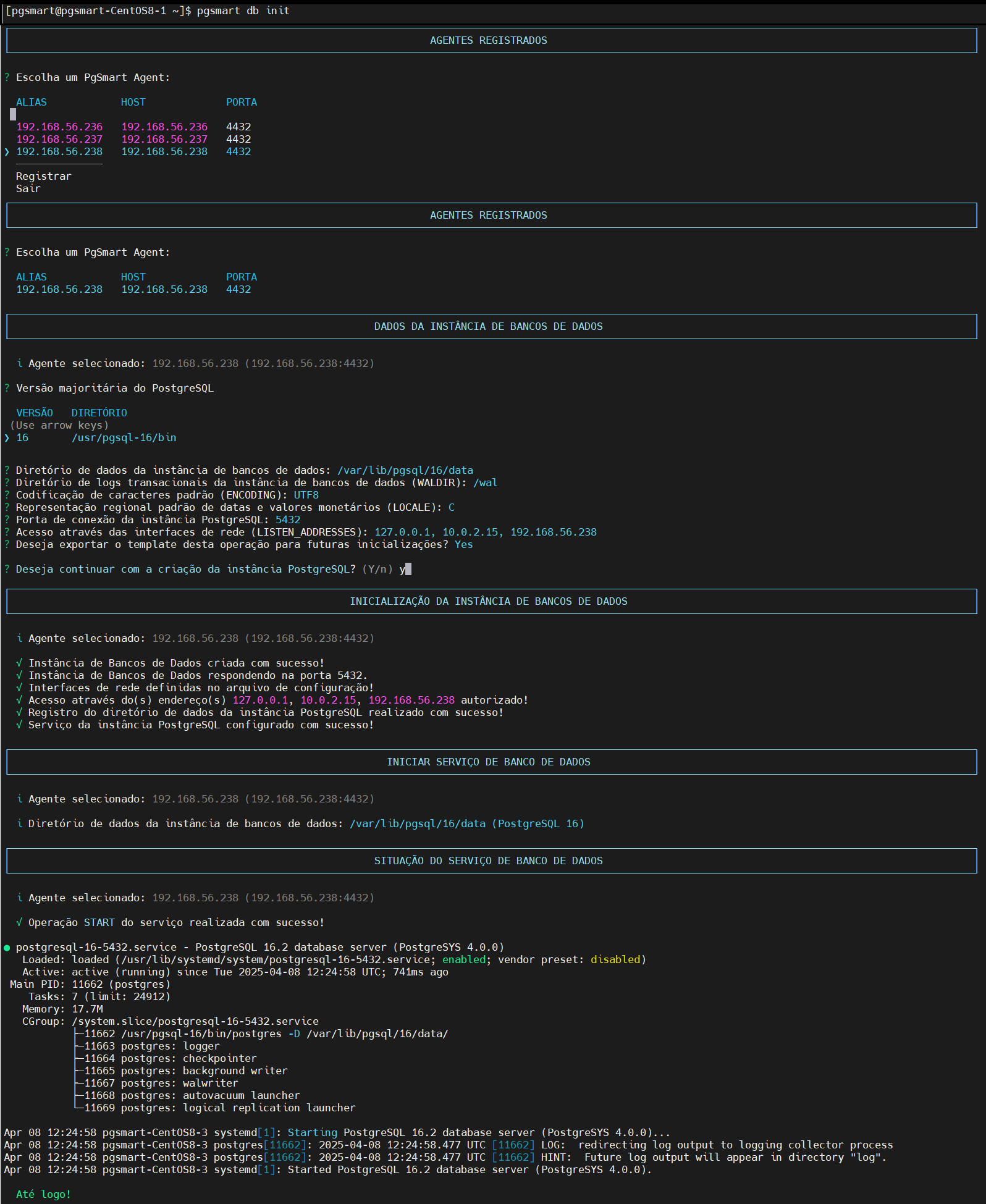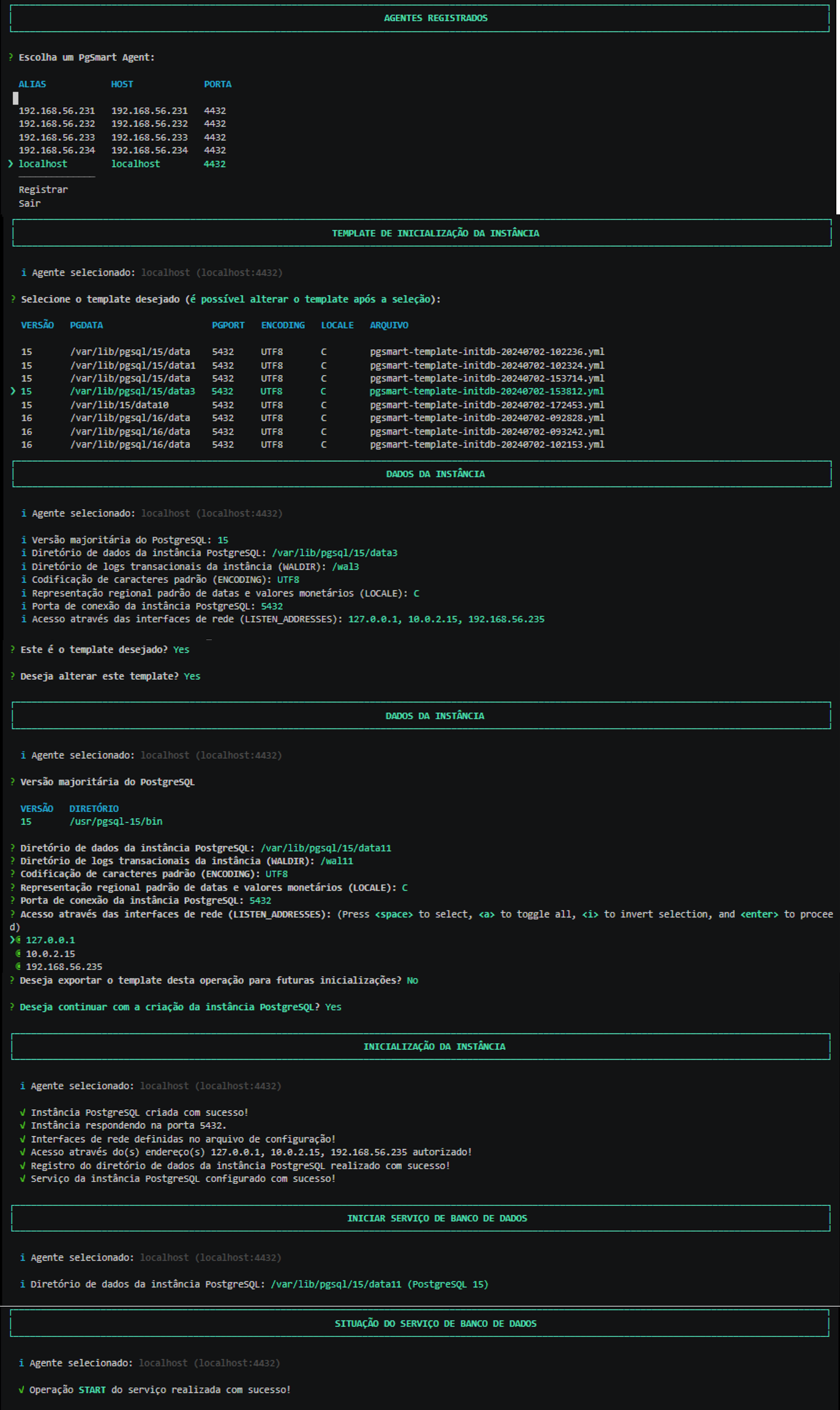Database Instance Initialization
Before any activity, it is necessary to initialize the cluster or instance, which is a group of databases managed by a single master PostgreSQL server process.
In terms of file systems, the cluster is a directory where all data and metadata will be stored. This area is called the instance data directory or PGDATA.
This option allows PgSmart to run the PostgreSQL initdb command, passing the required options to create a cluster.
PgSmart creates a drop-in file for each initialized instance, with the port number in the filename. This file contains the environment variables required to run the database service. PgSmart also enables and registers the database service in systemd.
- Before initializing the database instance, you must install the database service. For more information, see Database Service Installation.
pgsmart db init [Flags]
Flags:
-D, --pgdata=<value>=> Data directory of the PostgreSQL instance.-M, --pgversion=(11|12|13|14|15)=> Major PostgreSQL version.-a, --agent=<agent>=> Alias, hostname or IP of the server where a PgSmart Agent is installed.-h, --help=> Help.-t, --template=> Use an instance initialization template.
Non-interactive execution is disabled for this operation.
pgsmart db init
- Instructions
- Video
-
Select the desired PgSmart Agent (or Register new Agent).
-
Select the major version of PostgreSQL from the listed options.
-
Enter the instance's data directory (PGDATA).
-
Enter the transaction log directory (WALDIR).
-
Enter the default character encoding ENCODE.
-
Select the default locale representation (LOCALE).
-
Enter the instance port (PGPORT).
-
Select the network interfaces used to access the instance (LISTEN_ADDRESSES).
-
Confirm whether to export the template for reuse (optional).
-
Confirm instance creation.

Default values can be confirmed (<ENTER>) or changed by the user.
PGDATA, WALDIR, and port must be unique for each instance.
Binary installation directory and data directory will only be requested if [PGDATA] and [PGBIN] are not found in the environment.
Command Variants for Interactive Initialization
Some parameters can be passed in advance, but execution will still require confirmation.
Example:
pgsmart db init --pgversion 15
PgSmart can save instance initialization data as a reusable template, stored in opt/pgsmart-client/templates in JSON format.
These templates are identified by their timestamp and can be reused by copying to the templates directory on the target server.
To initialize a cluster using a template:
pgsmart db init -t
- Instructions
- Video
-
Select the PgSmart Agent (or Register new Agent).
-
Select the desired template from the list.
-
The following information will be displayed from the selected template:
- PostgreSQL major version
- PGDATA
- WALDIR
- ENCODING
- LOCALE
- PGPORT
- LISTEN_ADDRESSES
3.1. Confirm the selected template. 3.2. Edit the template if desired. 3.3. Confirm instance creation.
 Figure 2 - Database Instance Initialization - Template
Figure 2 - Database Instance Initialization - Template
For a new instance on the same server (localhost mode), manually update config_pgdata, initdb_waldir, and the connection port in the template file.
PgSmart sets environment variables in the Linux bash_profile. To load them immediately, run:
source ~/.bash_profile